Understanding Design Architecture - Basic
In this microlearning, we'll explore the concept of "Design Architecture" and how it can assist you in managing your integration landscape. "Design Architecture" refers to the overview of where your instances are deployed, which machines they're running on, and the resources required for deployment. By understanding this overview, you'll gain insights into where your instances are located (cloud or on-premise), the machine sizes needed, and whether you have the capacity to develop more integration solutions within your current setup.
Should you have any questions, please contact academy@emagiz.com.
1. Prerequisites
- Basic knowledge of the eMagiz platform
2. Key concepts
This microlearning centers around understanding what the Design Architecture overview is and how it can help you.
With Design Architecture we mean: The desired overview of where the instances are deployed, on which machines, and how many resources it takes to deploy these instances.
The Design Architecture gives you insights into:
- Where do my instances run (cloud, on-premise)
- What is the machine size needed to run my instances
- Can I still develop more integration solutions within the current sizing parameters
3. Understanding Design Architecture
The Design Architecture overview is accessible under Design. In Design, you can click on Architecture to get to the overview.
The following Design Architecture could look similar to what you would see the first time you open this page. A lot to improve as you can see.
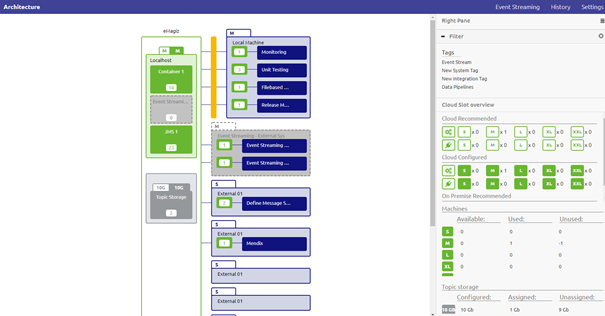
As you can see in the overview of the architecture we have several machines within our integration landscape (i.e. localhost, local machine, External 01, etc.) and each machine has several systems running on it.
3.1 Core Machine
The machine called localhost in this example is a so-called core machine. This machine (or machines if you scale up) plays host to the core functionalities of eMagiz:
- JMS
- Process Container (holds all onramps, offramps, routers, and the error process for messaging processes)
- Event Streaming Container (holds all onramps and offramps for event stream processes)
Depending on your specific implementation you need some of them or all of them. If you do not need them you can exclude them. As a result, eMagiz will grey them out indicating that the system in question can be ignored.
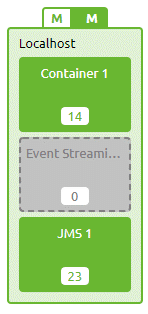
3.2 Connector Machine(s)
The machine called a local machine in this example is a so-called connector machine.
These machines are the place where you exchange data with other systems. As this is the place to connect to other systems internet connectivity is a must.
Within eMagiz we make a distinction between two types of connector machine(s):
- Connector machine(s) running in the eMagiz Cloud managed by eMagiz
- Connector machine(s) running on-premise in the data center of the client
Both are also represented differently within this picture. The on-premise systems are blue and behind one firewall.
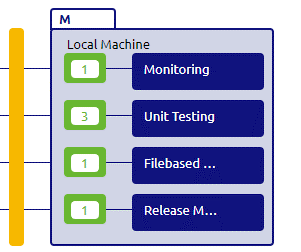
The connector machine(s) in the eMagiz Cloud is running in between firewalls and are green.

Cleaning the picture up and removing the unnecessary systems gives us a way nicer overview
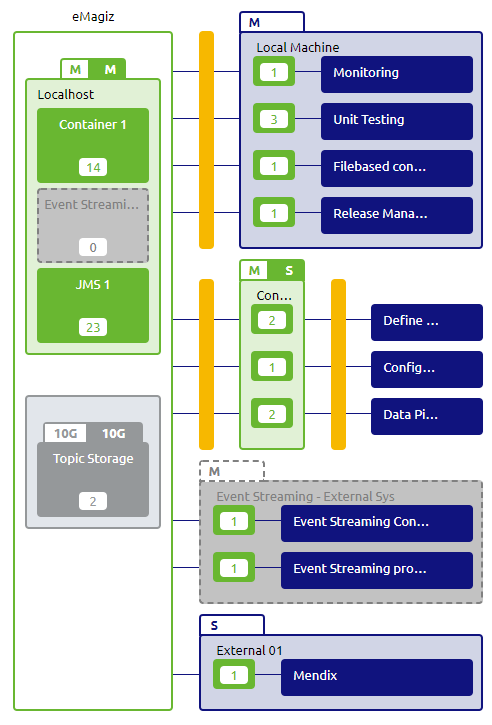
3.3 Determining size
Apart from determining where an instance (runtime) should be running (cloud or on-premise) the Design Architecture
also helps in determining the size a machine would need to have to support the processes running on it.
When you activate the Start Editing mode you will notice that you can alter the size of the green machines (those that are managed by eMagiz)
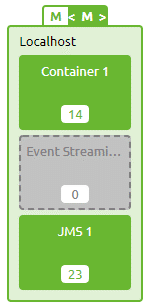
To help you determine the size of the machine eMagiz has the option to check the size status

In the pop-up that follows we specify how the memory advice of eMagiz is calculated (the figure on the left above a machine).
This can help you determine the correct sizing for your machine, now and in the future
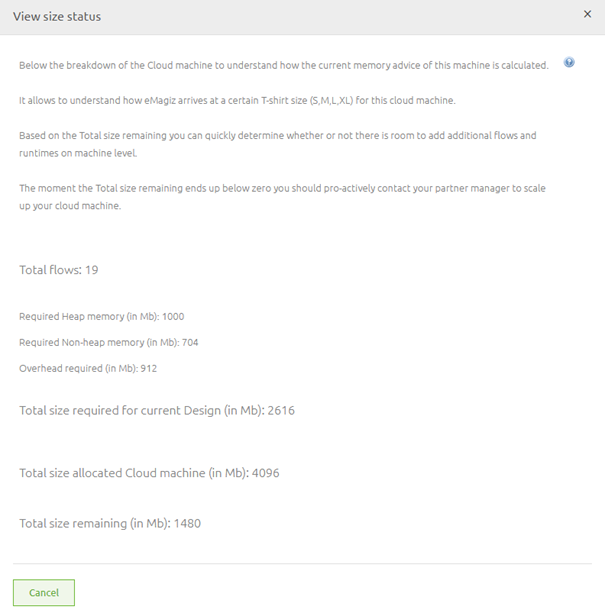
There is much more to tell about Design Architecture but more on that in later microlearnings.
4. Key takeaways
- Design Architecture gives you context on which instances run where (on-premise or cloud)
- Design Architecture gives you the tools that you need to determine the correct sizing for your environment
- Machines are divided into so-called core and connector machines
